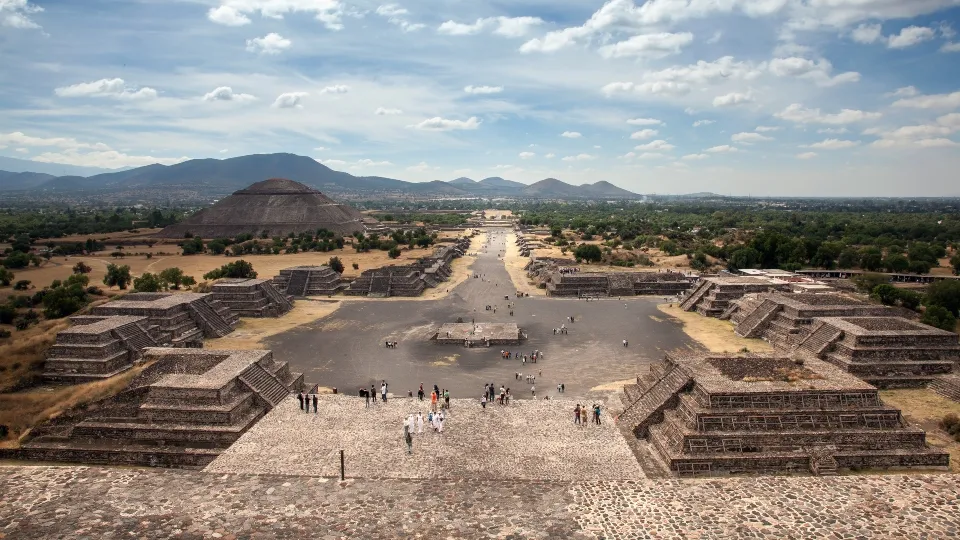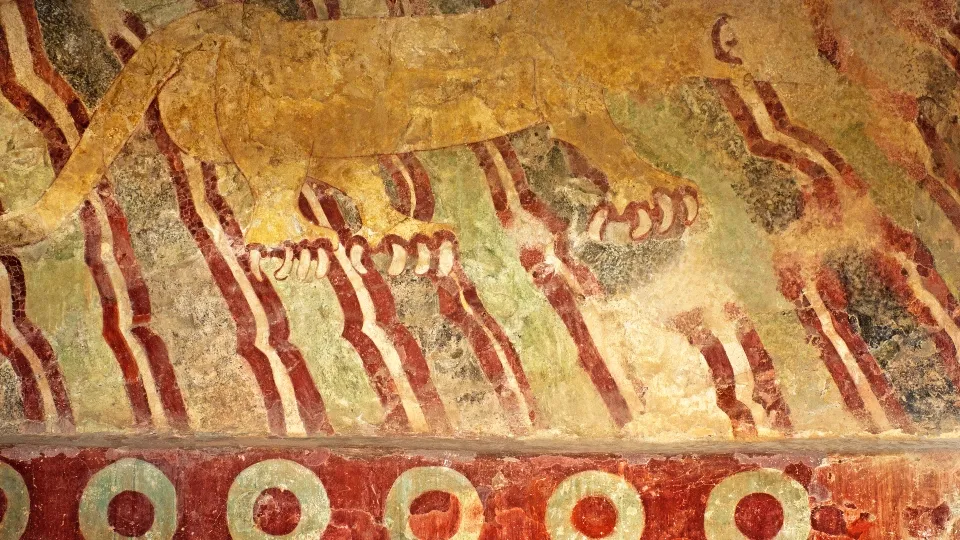Teotihuacan: Gods and Pyramids of Antiquity
The view in 1900 must have looked like any other mountain, until excavation and clearing began.
The ancient Mesoamerican city of Teotihuacan is located in a sub-valley of the Valley of Mexico . It is believed to have been one of the largest and most important cities in pre-Columbian America, with an estimated population of at least 125,000 inhabitants.

Famous primarily for its massive pyramids dedicated to the sun and moon, the archaeological site also features numerous beautiful and well-preserved murals and sculptures, as well as museums packed with the city’s mysterious and fascinating history. Just 50 km from Mexico City, Teotihuacán is one of the most visited Mesoamerican sites in the world. The origins of Teotihuacán remain largely unknown, but what do we know ?
History
Little is known about the early history of Teotihuacan and its origins. The ancient city, built by hand, is believed to have been established about 2,000 years ago, when construction began. It is unknown who built the site and what their beliefs or language were.
Teotihuacán then entered a period of decline, with important monuments looted and burned around 550 AD. Some scholars believe the fires may have originated from an internal uprising.
It was the Aztecs, upon descending on the abandoned site, who gave the city its now well-known name of Teotihuacán. The meaning of this name? Place of the Gods , Cradle of the Gods or Place where the Gods were born .

Teotihuacan, along with the ruins of Yucatan and Chiapas, is one of the archaeological sites with the longest history of exploration in Mexico. The first excavations date back to 1884 and some of the monuments were later restored between 1905 and 1910.
Since 1962, the National Institute of Anthropology and History (INAH) has coordinated archaeological research and supervised excavations. In 1987, the ancient city was declared a World Heritage Site by UNESCO.
The site itself
In addition to an incredible pyramid complex, Teotihuacan contains around 2,000 single-story apartment complexes, plazas, temples, and a huge central street, known as the Calzada de los Muertos . The street is over two kilometers long and connects the three main pyramid complexes. In fact, a great way to explore the site is by hot air balloon.
Pyramid of the Sun
The Pyramid of the Sun is the largest structure at Teotihuacan. It rises 66 meters above ground level and measures approximately 220 by 230 meters at its base, making it one of the largest pyramids in the world. It is believed that the sun was worshipped here before the pyramid was built. In 1971, an archaeological team discovered a tunnel beneath the pyramid that led to a chamber shaped like a four-leaf clover, likely used for rituals of some kind.

Pyramid of the Moon
Located at the northern end of the Avenue of the Dead, smaller than the Pyramid of the Sun, is the Pyramid of the Moon. Its raised platforms were probably also used for rituals, which could be witnessed by people from the ground. Tombs found associated with the structure contain both human and animal sacrifices.
The Temple of Quetzalcoatl
The third largest pyramid at Teotihuacan, the Temple of Quetzalcoatl, is arguably the most impressive. Quetzalcoatl, or the feathered serpent , is one of the most important gods in Mesoamerican culture. The pyramid has alternating heads of the serpent and another figure, often thought to belong to Tlaloc, the Aztec god of rain. The structure also has carvings of snails and shells, symbols of water. Burials of about 200 people, many of them young men, who are thought to have been warriors, were found near the pyramid.

Murals in Teotihuacan
Teotihuacan features numerous colorful murals painted on the city’s plastered walls. These vivid murals show great attention to detail and are considered the most likely source for understanding the history and culture of Teotihuacan. Images of gods, birds, jaguars, and more can be seen not only in apartment complexes, but also in palaces and temples. Scholars have not agreed on specific interpretations of the murals, but religious, natural, and cultural motifs are evident.
Although fragments of Mayan and Zapotec texts have been found, it is said that the natives of Teotihuacán did not develop a textual writing system, but rather used iconography.






